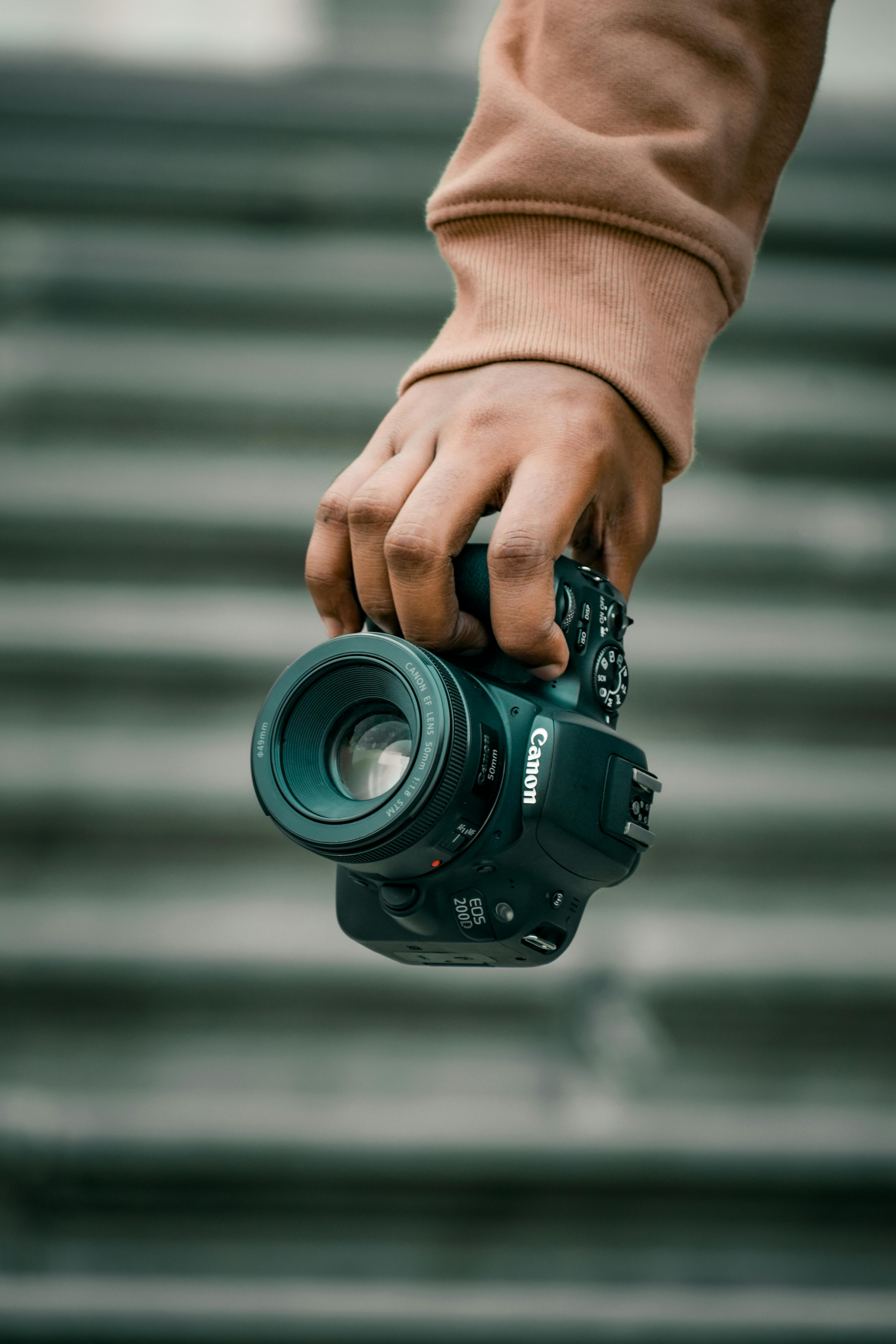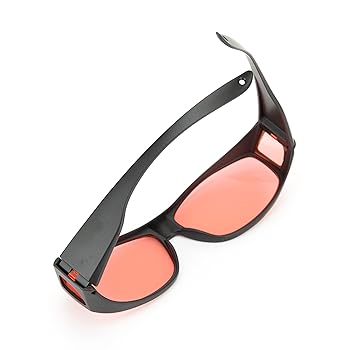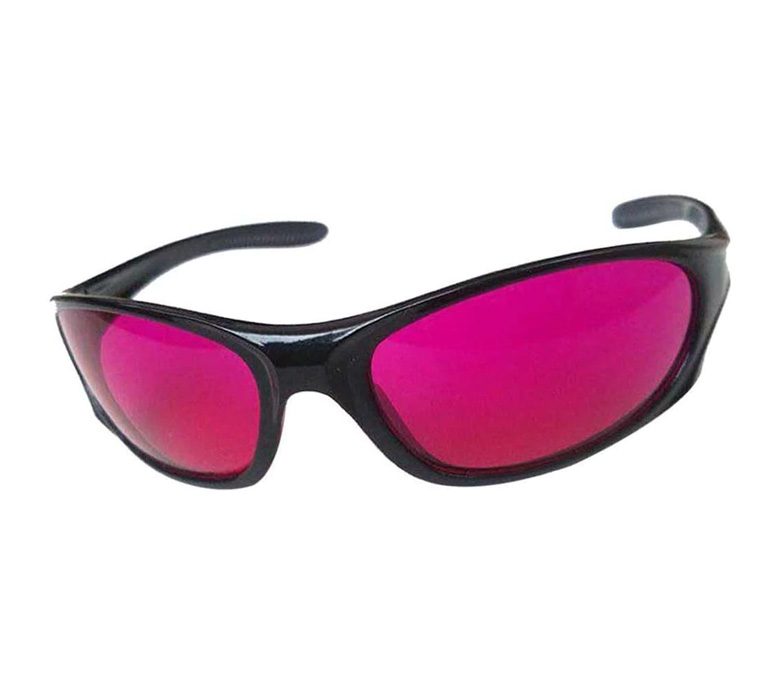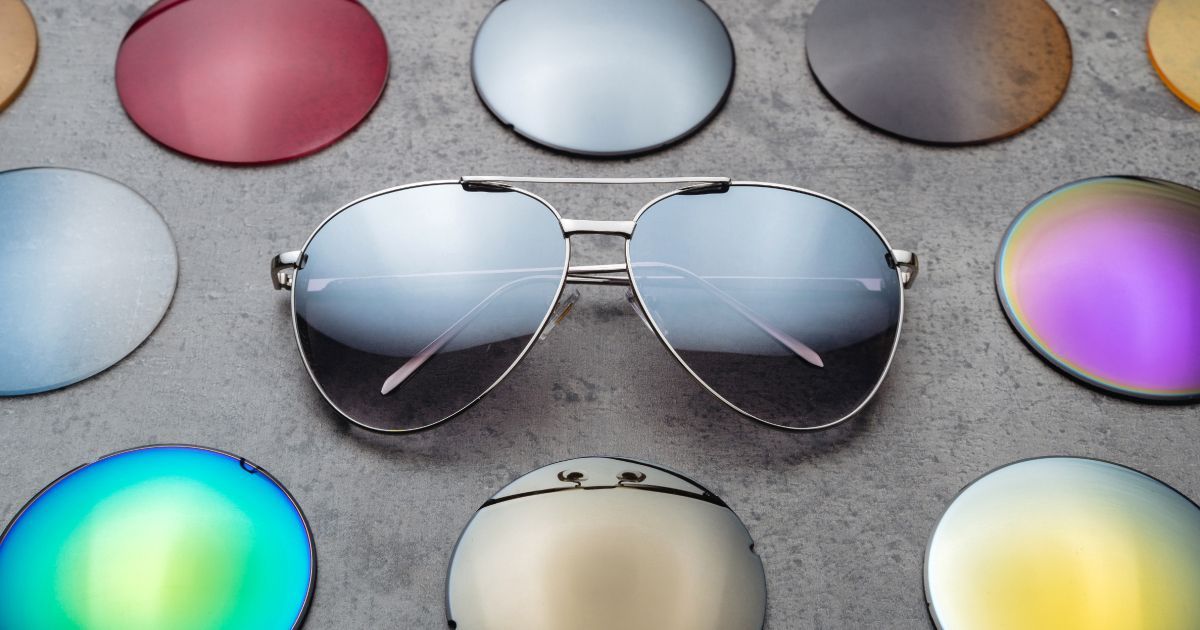Are you tired of eye strain, glare, or wish to enhance your visual world? Discover how cutting-edge tinted lenses offer more than just style; they provide advanced solutions for glare reduction, enhanced clarity, and even therapeutic benefits for various visual and neurological conditions. This comprehensive guide will reveal how these specialized lenses cater to diverse needs, from optimizing athletic performance to improving daily comfort, just as carefully selected female reading glasses can transform your reading experience. Explore how the right tint can revolutionize your vision, offering precise light filtration for unparalleled comfort and performance, ensuring you find the perfect eyewear solution to meet your unique demands.
【Unveiling the Core Science of Tinted Lenses】

The true power of tinted lenses extends far beyond mere aesthetic appeal. While their stylish colors certainly draw attention, the underlying science reveals a sophisticated engineering that significantly enhances visual function and protects ocular health. Understanding how these colored lenses interact with light is crucial for appreciating their diverse benefits in 2025.
Beyond Simple Color: How Tinted Lenses Affect Vision
Many people assume tinted lenses simply darken their surroundings, like a dimmer switch for light. However, this simplification overlooks the precise optical mechanisms at play. Different lens tints are engineered to selectively filter specific wavelengths of light, optimizing visual comfort, contrast, and protection against harmful radiation.
Filtering Specific Wavelengths for Targeted Benefits
The magic of tinted lenses lies in their ability to manipulate the light spectrum. Each color of tinted eyewear or tinted contact lenses is designed with a particular purpose. For instance, grey tints offer true color perception while reducing overall brightness, making them ideal for general use and driving. Brown or amber dyed lenses, conversely, excel at enhancing contrast, particularly by filtering out blue light and improving depth perception. This makes them highly beneficial for outdoor activities like fishing, golfing, or skiing, where distinguishing subtle contours is critical.
Yellow tints, often seen in shooting glasses, are remarkable for their ability to enhance brightness and contrast in low-light, hazy, or foggy conditions. They achieve this by filtering out blue light, which causes atmospheric haze, allowing for sharper visual clarity. Green tints balance true color perception with excellent contrast enhancement, making them a popular choice for reducing glare and eye strain during prolonged outdoor exposure. As we navigate the digital landscape in 2025, the strategic filtering of specific wavelengths, including harmful blue light, becomes increasingly vital for overall ocular health. Just as we seek specialized light filtration from tinted lenses, many also benefit from the dual functionality offered by advanced glasses with readers, providing crystal clarity for both distance and near vision.
The Mechanism of Glare Reduction Lenses
One of the most significant advancements in tinted lens technology is the development of glare reduction lenses, particularly polarized options. Unlike standard tinted lenses that simply reduce the intensity of all light, polarized ocular tints specifically target and eliminate blinding glare. This glare, often encountered from reflective surfaces like water, snow, or roads, is caused by horizontal light waves.
Polarized tinted lenses contain a special filter that blocks these horizontal light waves while allowing vertical light waves to pass through. The result is dramatically reduced eye strain, enhanced visual comfort, and superior clarity. For drivers, this means a clearer view of the road, free from the distracting flash of sunlight off car hoods or wet pavement. For anglers, it means being able to see beneath the surface of the water without the shimmering reflection. This targeted glare reduction is a testament to the sophisticated optical engineering behind modern tinted lens solutions.
A Brief History of Tinted Contact Lenses and Eyewear
The journey of tinted lenses from simple light filters to highly specialized ophthalmic solutions is a fascinating one, marked by continuous innovation and evolving consumer needs.
From Early UV Protection to Specialized Solutions
The concept of tinted eyewear dates back centuries, with early forms used for protection from the sun’s brightness. However, the scientific understanding of UV radiation and its harmful effects on the eyes truly propelled the development of protective tinted lenses. Early sunglasses, often made with basic dyes, aimed to reduce overall light intensity. As research advanced, particularly in the mid-20th century, the focus shifted to incorporating specific UV protection into lens tints.
The evolution continued with the introduction of cosmetic contact lenses in the late 20th century, allowing individuals to subtly or dramatically change their eye color. Beyond aesthetics, significant strides were made in creating tinted contact lenses for therapeutic purposes, such as reducing photophobia or managing certain visual impairments. The advent of photochromic lenses – tints that darken in response to UV light and lighten indoors – represented a major leap, offering adaptive tinted lens solutions that automatically adjust to varying light conditions.
The Rise and Fall of Innovations: The Nike MaxSight Case Study
The history of tinted lenses also includes specialized innovations designed for peak performance, some of which had a limited lifespan. A notable example is the Nike MaxSight tinted contact lenses, launched in the early 2000s. These revolutionary ocular tints were specifically engineered for athletes. For instance, the “Amber” tint was designed for baseball players to enhance the contrast of the white ball against a blue sky or green outfield, while the “Grey-Green” tint aimed to reduce glare on green fields for sports like golf or soccer.
Nike MaxSight lenses were a prime example of applying precise wavelength filtering for athletic advantage, aiming to improve reaction time and visual acuity in specific sporting environments. Despite their innovative premise and scientific backing, the MaxSight tinted contact lenses ultimately faced challenges related to market adoption, specialized fitting requirements, and the niche nature of their application. Their discontinuation highlights the complexities of bringing highly specialized tinted lens technologies to a broad market, even with compelling scientific benefits. While historical innovations like MaxSight illustrate specific market dynamics, the evolution continues, with a vast array of modern tinted lenses now available to address diverse visual needs, offering both protection and enhanced visual performance for daily life.
【Revolutionizing Medical Eyewear: Tinted Lenses for Clinical Conditions】

Beyond their stylish appeal and everyday glare reduction, tinted lenses have undergone a profound revolution, emerging as crucial medical eyewear in 2025. These specialized ophthalmic solutions are engineered not just for cosmetic enhancement or comfort, but as therapeutic tools to manage complex clinical conditions. They represent a significant advancement in improving the quality of life for individuals grappling with various visual impairments and neurological disorders.
The precise application of tinted lens technology allows for targeted intervention, modifying how light interacts with the eye and brain. This focused approach addresses specific symptoms, offering relief and enhanced functionality where conventional clear lenses fall short.
Combatting Photophobia: Tinted Lenses for Light Sensitivity Solutions
One of the most impactful applications of tinted lenses is in combatting photophobia, a debilitating light sensitivity that affects millions globally. Photophobia is more than just discomfort from bright light; it’s an intolerance that can trigger severe pain, headaches, and visual distress. Tinted lenses provide effective light sensitivity solutions by selectively filtering the specific wavelengths of light known to exacerbate these symptoms.
For individuals with chronic photophobia, certain lens tints can significantly reduce the intensity of bothersome light while maintaining optimal visual clarity. This targeted light filtering helps to calm overactive visual pathways, providing much-needed relief and enabling greater participation in daily activities.
Glaucoma Symptoms and The Role of Therapeutic Tinted Glasses
Glaucoma, a leading cause of irreversible blindness, often presents with symptoms that include increased light sensitivity and glare. Patients frequently report discomfort in bright environments, making daily tasks challenging. In 2025, therapeutic tinted glasses are increasingly being utilized to alleviate these specific glaucoma symptoms, enhancing patient comfort and visual function.
Research, including studies published in journals like Ophthalmology, highlights how specific lens tints, often those with amber or red hues, can reduce glare and improve contrast sensitivity for glaucoma patients. These colored lenses work by filtering out harmful blue light, which can scatter within the eye and cause additional discomfort. By optimizing light intake, these tinted spectacles can make a tangible difference in the daily lives of individuals managing this progressive eye condition. To explore a wide array of therapeutic tinted lenses designed for various eye conditions, you can find solutions that target specific light sensitivities and improve ocular comfort here.
Migraine Light Sensitivity Lenses: The Avulux Breakthrough
For migraineurs, photophobia is a hallmark symptom, often preceding or accompanying a migraine attack and persisting during postdrome. The quest for effective migraine light sensitivity lenses has led to significant advancements, with Avulux representing a notable breakthrough in 2025. This specialized ophthalmic solution offers targeted relief for migraine-related light sensitivity.
Avulux lenses are scientifically engineered to precisely filter narrow bands of harmful blue, amber, and red light wavelengths that have been identified as triggers or aggravators for migraine attacks. Unlike general tinted lenses, Avulux allows beneficial green light to pass through, which is shown to be less irritating to the migraine brain. Clinical trials have indicated that these light-filtering lenses can reduce migraine frequency and severity, providing a non-pharmacological approach to managing this chronic condition. This precision tinting exemplifies how specific wavelength manipulation can offer profound therapeutic benefits for neurological conditions involving light sensitivity.
Specialized Tints for Other Neurological Disorders
The application of precision tinted lenses extends beyond photophobia and migraine, offering relief and improved visual processing for individuals with a spectrum of other neurological disorders. These specialized tints are tailored to address unique visual stress and perceptual challenges inherent in different conditions. The goal is to optimize the visual environment, reducing distracting stimuli and enhancing visual comfort and performance.
Precision Tinted Lenses for Epilepsy, Autism, and Stroke Recovery
In 2025, precision tinted lenses are increasingly recognized for their role in managing specific visual symptoms associated with conditions like epilepsy, autism, and stroke recovery. For individuals with photosensitive epilepsy, certain patterns of light or flicker can induce seizures. Specific tints, often blue or violet hues, have been shown to modulate the visual input, potentially reducing the likelihood of seizure triggers by filtering out irritating wavelengths and mitigating visual distortions.
For individuals on the Autism Spectrum Disorder (ASD), visual stress and photophobia are common. Many experience visual distortions such as blurring, shimmering, or movement in static text or objects, which can impede reading comprehension and overall comfort. Precision tinted lenses, customized to an individual’s specific visual processing needs through a process called chromatic filtering, can often reduce these perceptual distortions, leading to improved focus, reduced eye strain, and enhanced ability to engage with visual information.
In stroke recovery, patients may experience various post-stroke visual impairments, including hemianopia, visual field defects, or general visual processing difficulties. While not a cure, specialized tinted lenses can sometimes aid in managing glare, improving contrast, or reducing the perceived visual clutter, thereby supporting visual rehabilitation and enhancing the patient’s ability to navigate their environment. The development of therapeutic eyewear like these tinted lenses signifies a commitment to bespoke optical solutions, much like the advancements seen in understanding the various options and associated progressive glasses cost that cater to unique individual visual requirements, ensuring optimal performance and comfort. For a comprehensive range of tinted lenses tailored to diverse medical and lifestyle needs, offering both protective and enhancing visual solutions, explore collections that prioritize ocular health and visual clarity here.
【Optimizing Performance: Tinted Lenses in Sports and Beyond】

Beyond their vital role in medical applications, tinted lenses have emerged as indispensable tools for optimizing performance across diverse fields. From enhancing the visual world for the colorblind community to providing a crucial strategic advantage for athletes, these specialized ophthalmic solutions are engineered to elevate human capability. In 2025, the application of precision tinting extends far beyond mere aesthetic or basic sun protection, offering tangible benefits in visual clarity, reaction time, and overall ocular comfort in demanding environments.
Enhancing Color Perception for the Colorblind Community
For millions worldwide, the world of color remains a mystery or a muted spectrum. Color vision deficiency, commonly known as colorblindness, can profoundly impact daily life, making tasks like distinguishing traffic lights, interpreting maps, or appreciating art a challenge. However, advancements in tinted lens technology are revolutionizing color perception, offering a vibrant new perspective for the colorblind community. These innovative eyewear solutions work by selectively filtering light, enabling individuals to perceive a broader and more accurate range of colors.
EnChroma Colorblind Glasses: How They Work
A significant breakthrough in enhancing color vision for the colorblind community comes from EnChroma Colorblind Glasses. These specialized tinted lenses are not a cure for colorblindness, but rather a sophisticated visual aid designed to improve color discrimination. The science behind EnChroma involves spectral notch filtering. This technology precisely removes specific wavelengths of light at the point where the red and green cone cells in the eye have overlapping sensitivities.
By filtering out these confusing overlapping wavelengths, EnChroma lenses enhance the separation between the red and green color signals sent to the brain. This wavelength manipulation allows the brain to process a more distinct and accurate color signal, leading to an improved perception of hues that were previously indistinguishable. For individuals with common forms of red-green colorblindness, such as deuteranomaly and protanomaly, these precision tinted lenses can unlock a world of previously unseen colors, from the vividness of a sunset to the nuances in a painting.
Real-World Impact and Accessibility
The real-world impact of colorblind glasses like EnChroma is profound, transforming everyday experiences for countless individuals. Imagine seeing the true vibrant colors of autumn foliage for the first time, or distinguishing between different shades of fruit at the grocery store. For many, it’s an emotional and life-changing revelation, enabling them to engage more fully with their surroundings. Children can better differentiate colors in educational settings, and adults can gain increased confidence in professional and social situations where color discrimination is important.
With growing awareness and technological refinement, the accessibility of these color-enhancing tinted lenses is expanding. As demand increases, more individuals within the colorblind community are discovering these visual aids, leading to improved quality of life and enriched visual experiences. The continued development in precision optics suggests even greater advancements in color vision correction in the years to come. To explore advanced tinted lens technologies designed for various visual enhancements, including those that improve color perception, you can find innovative solutions that cater to specific visual needs and preferences here.
Strategic Advantage: Tinted Lenses for Athletes
In the demanding world of sports, every fraction of a second and every ounce of visual clarity can mean the difference between victory and defeat. This is where tinted lenses offer a significant strategic advantage for athletes. Far from being mere fashion accessories or simple sun blockers, performance-enhancing tinted eyewear is engineered to optimize visual acuity, contrast, depth perception, and reaction time in specific sporting environments. They are a critical piece of athletic equipment, designed to give competitors an edge.
Tailored Tints for Specific Sporting Environments
The key to unlocking athletic performance with tinted lenses lies in tailored tints for specific sporting environments. Different lens colors are designed to filter light in distinct ways, enhancing certain aspects of vision crucial for particular sports.
- Grey/Smoke Tints: Ideal for
general outdoor usein bright conditions, theseneutral tintsreduce overall light intensity without altering color perception. Excellent forcycling,running, orgolfwhere true color representation is important. - Brown/Amber Tints: These
warm-hued lensesexcel atcontrast enhancement, making objects appear sharper and improvingdepth perception. They are highly beneficial forgolfers(seeing contours on the green),baseball players(tracking the ball against the sky),fishermen(spotting fish or structures underwater), andskiers(distinguishing snow variations in variable light). - Yellow/Orange Tints: Known for
contrast boostinginlow-light conditionsand reducing haze,yellow tintsbrighten the field of vision. They are favored byshooters(improving target visibility),indoor athletes, andcyclistsin early morning or late evening rides. - Rose/Red Tints: These
tintsare excellent formaximizing contrastingreen environments, making them popular amongbaseballandgolf players. They also providesoothing ocular comfortduring prolonged exposure to bright light. - Blue/Violet Tints: Primarily used for
reducing glarein snowy or foggy conditions,blue tintshelpskiersandsnowboardersdiscern contours and variations in the snowpack, offering a clearer and safer ride.
Professional athletes often collaborate with optometrists and sports vision specialists in 2025 to select the optimal lens tint that aligns with their specific sport, playing conditions, and individual visual needs, illustrating the scientific approach to athletic eyewear.
Beyond Sunglasses: Comfort and Performance Benefits
It’s crucial to understand that performance tinted lenses offer benefits far beyond sunglasses. While they provide excellent UV protection and glare reduction, their true value lies in their ability to enhance ocular comfort and deliver measurable performance benefits. By filtering out distracting light, reducing eye strain, and improving visual clarity, athletes can maintain focus for longer periods. This reduction in visual fatigue translates directly into improved endurance and consistency.
Furthermore, the right tinted lenses can dramatically improve an athlete's reaction time by sharpening their perception of moving objects and enhancing depth perception. In fast-paced sports, a fraction of a second gained in visual processing speed can dictate the outcome. These specialized lenses also offer superior eye protection from wind, dust, and impact, ensuring ocular health during intense activity. When considering performance eyewear, especially for those requiring vision correction, understanding how to buy eyeglasses with prescription online becomes essential. Many optical providers in 2025 offer the option to integrate these advanced tinted lens technologies into prescription eyewear, allowing athletes to achieve optimal vision and protection simultaneously. To discover performance-enhancing tinted lenses tailored for various athletic pursuits, ensuring both ocular comfort and strategic visual advantage, explore specialized collections that prioritize sports-specific optics and uncompromised clarity here.
The Precision of Personalization: Scientific Insights into Tinted Lenses

Building on their transformative roles in both medical and athletic domains, tinted lenses are increasingly recognized for their deeply individualized impact on human visual perception and neurological function. The science behind precision tinting goes far beyond simple light filtration; it delves into how specific wavelengths of light interact with the brain’s visual processing centers, influencing everything from mood to postural stability. In 2025, ophthalmic research continues to uncover the subtle yet profound ways specialized tinted eyewear can be tailored to an individual’s unique visual needs and sensory responses, highlighting that a “one-size-fits-all” approach is rarely optimal for maximizing ocular comfort and performance.
The Individualized Response to Color Visual Stimulation
The human visual system is remarkably complex, with each individual’s retinal sensitivity and neural pathways processing color visual stimulation in a subtly distinct manner. This inherent variability means that a specific tint that benefits one person might have a neutral or even adverse effect on another. Researchers in neuro-optometry are actively investigating how different tinted lenses influence brain activity, cognitive processing, and overall visual comfort based on unique bio-individual profiles. This personalized approach to eyewear solutions is pivotal for unlocking the full potential of tinted lens technology.
Postural Control and Personalized Tinted Lenses
Intriguing scientific evidence suggests a direct link between color visual stimulation and postural control. Studies indicate that certain tinted lenses can subtly alter how the brain interprets visual input related to spatial awareness and balance. For instance, research published in 2025 has explored how specific tints can influence the vestibulo-ocular reflex and proprioception, which are critical for maintaining equilibrium. This neuro-visual connection implies that a customized tinted lens prescription could potentially enhance stability and reduce sway for individuals experiencing balance difficulties. These precision optics are not merely about seeing clearly but about optimizing the entire visual-motor system.
No Universal “Best” or “Worst” Tint for All Individuals
A fundamental principle emerging from visual science is that there is no universal "best" or "worst" tint for all individuals. The effectiveness of tinted lenses is highly dependent on a myriad of factors, including the user’s specific visual condition, underlying neurological sensitivities, environmental lighting conditions, and even psychological responses to color. What might reduce visual stress for one person could increase it for another. This underscores the necessity for personalized assessments and empirical testing when selecting specialized eyewear. Expert optometrists and vision therapists often employ a range of diagnostic tools and trial lenses to identify the optimal tint that truly enhances an individual’s visual function and well-being.
Clinical Implications and Future Directions
The growing understanding of the individualized impact of tinted lenses carries significant clinical implications, particularly for addressing a range of visual processing disorders and neurological conditions. As ophthalmic technology continues to advance in 2025, the potential for precision tinted eyewear to serve as a therapeutic tool is expanding, moving beyond traditional vision correction. The future directions of this research promise even more sophisticated and tailored visual solutions.
Addressing Balance Issues and Fall Prevention
One of the most compelling clinical applications of personalized tinted lenses lies in addressing balance issues and contributing to fall prevention, especially in vulnerable populations such as the elderly or those with neurological disorders like Parkinson's disease or multiple sclerosis. By optimizing visual input, specific tints can help stabilize gaze and improve spatial orientation, thereby enhancing postural stability and reducing the risk of accidental falls. This therapeutic application requires careful clinical evaluation to determine the most beneficial ocular solution, often integrating tinted lenses with other vision correction needs. For individuals seeking advanced visual solutions that blend therapeutic benefits with vision correction, options like prescribed sunglasses offer a comprehensive approach to ocular health and functional improvement.
Challenges in Identifying Optimal Tints
Despite the promising advancements, identifying optimal tints presents considerable challenges. The process often involves iterative testing and subjective feedback, as neuro-visual responses are not always easily quantifiable. Clinicians must navigate a complex interplay of spectral absorption, light transmission, and individual perceptual differences. Ongoing research focuses on developing more objective biometric measures and AI-driven algorithms to streamline the tint selection process, making personalized tinted lenses more accessible and precise. The goal is to move towards a future where precision optics can be prescribed with greater certainty, unlocking the full therapeutic potential of tinted eyewear for a wider range of visual and neurological conditions. To explore innovative tinted lens technologies designed for precise visual enhancement and personalized comfort, addressing diverse needs from therapeutic applications to everyday clarity, you can find a comprehensive selection of advanced eyewear solutions here.
Navigating Your Options: Selecting the Ideal Tinted Lenses

Understanding the profound and personalized impact of tinted lenses is the first step; the next is selecting the ideal tinted lenses that align with your unique visual requirements and lifestyle. Given the individualized response to color visual stimulation, as highlighted by recent ophthalmic research in 2025, a one-size-fits-all approach is demonstrably ineffective. This section provides a comprehensive guide to understanding the various types of tinted eyewear, their specific benefits, and the crucial role of expert guidance in achieving truly personalized visual solutions.
Understanding the Types of Tinted Eyewear and Their Benefits
The landscape of tinted eyewear is diverse, extending far beyond conventional sunglasses. Each tint color and intensity is designed to address specific visual challenges or enhance particular visual functions. From therapeutic applications to performance enhancement, specialized tints offer a spectrum of ocular benefits. What are the primary categories of tinted lenses, and how do they differentiate in their utility?
Therapeutic Tinted Glasses for Specific Conditions
Therapeutic tinted glasses are not merely a fashion statement; they are precision optical tools engineered to alleviate symptoms associated with various visual processing disorders and neurological sensitivities. For individuals experiencing conditions such as migraines, photophobia (light sensitivity), dyslexia, or even specific balance disorders, certain color filters can significantly reduce visual stress and improve perceptual comfort. For instance, clinical studies in 2025 continue to explore how rose, blue, or green tints can modulate light transmission to calm overactive visual pathways, thereby enhancing reading fluency or stabilizing postural control. These specialized tinted lenses work by filtering out specific wavelengths of light that may be problematic for a sensitive visual system, providing a calming effect and improving the brain’s ability to process visual information efficiently. The goal of therapeutic tints is to optimize the visual environment for individuals whose eyes and brains react atypically to everyday light.
Performance-Enhancing Tints for Everyday and Specialized Use
Beyond therapeutic applications, performance-enhancing tints are designed to optimize visual clarity, contrast, and depth perception across a wide range of activities. These functional tints cater to everyday needs as well as specialized uses in sports, professions, and hobbies. For example, yellow or amber tints are renowned for enhancing contrast in low-light conditions or hazy environments, making them popular among hunters, skiers, and drivers. Grey tints reduce overall brightness without distorting color perception, offering general UV protection and comfort for daily wear. Brown or copper tints can improve contrast and depth perception for activities like golf or fishing by filtering out blue light. Even within the realm of high-performance optics, the integration of prescription correction into tinted lenses offers unparalleled visual acuity. For athletes and outdoor enthusiasts seeking the ultimate combination of clarity, protection, and performance, understanding the features of high-performance prescription shades is essential for elevating their visual experience in challenging environments.
Expert Guidance and Personalized Solutions
Given the intricate relationship between tinted lenses, visual processing, and individual physiology, expert guidance is paramount when selecting eyewear. As established, no universal "best" or "worst" tint exists; the optimal solution is inherently personalized. Navigating the vast array of tint options requires a nuanced understanding of ophthalmic science and clinical assessment.
Consulting Ophthalmologists for Tailored Medical Eyewear
For medical eyewear and therapeutic tinted lenses, consulting ophthalmologists or neuro-optometrists is not merely recommended but often crucial. These vision care professionals possess the diagnostic tools and expertise to conduct comprehensive visual assessments, identifying underlying neurological sensitivities or visual processing challenges. Through empirical testing and trial lens protocols, they can pinpoint the specific tint and saturation that provides the most significant relief and functional improvement. A tailored prescription for tinted glasses considers not just refractive errors but also how light interacts with an individual’s unique visual system, ensuring that the chosen color filter enhances comfort and performance rather than detracting from it.
Exploring Vision Enhancement Technology for Unique Needs
Beyond clinical necessity, exploring vision enhancement technology can cater to unique needs and elevate everyday visual experiences. This often involves working with specialized optical dispensers or vision therapists who focus on performance optics and customized eyewear solutions. They can guide you through advanced lens coatings, gradient tints, and photochromic options that dynamically adjust to varying light conditions. For hobbyists, professionals, or anyone seeking to gain a competitive visual edge, these experts can recommend tinted lenses that sharpen focus, reduce glare, and optimize depth perception in specific environments. To discover a wide array of tinted lens technologies designed to meet diverse visual enhancement needs, from therapeutic benefits to peak performance, exploring available advanced eyewear solutions is a crucial step towards personalized ocular comfort and clarity. You can find a comprehensive selection of advanced eyewear solutions that cater to these precise requirements and personalized visual needs here.
Embrace Enhanced Vision: Unlocking the Full Potential of Tinted Lenses
From the sophisticated science of wavelength manipulation to their profound impact on daily life, tinted lenses are far more than just a fashion statement or simple sun protection. We’ve explored how these specialized optical solutions are revolutionizing medical eyewear, offering vital relief for debilitating conditions like photophobia, alleviating symptoms associated with glaucoma, and providing breakthrough light sensitivity management for migraineurs. Their role extends to improving visual processing and comfort for individuals with neurological disorders such as epilepsy, autism, and during stroke recovery, demonstrating a deep therapeutic value.
Beyond health applications, tinted lenses provide a tangible strategic advantage for athletes, with tailored tints enhancing contrast, depth perception, and reaction times across various sports. They also open up a vibrant world for the colorblind community, enabling improved color discrimination and a richer visual experience.
Crucially, the journey through the world of tinted lenses highlights the undeniable importance of personalization. As scientific insights reveal, there is no one-size-fits-all solution; individual responses to color stimulation vary widely. This necessitates expert guidance from ophthalmologists or specialized optical professionals who can assess unique visual needs and recommend the optimal tinted eyewear through empirical testing. Whether it’s for postural control, reducing visual stress, or enhancing athletic prowess, the right precision tint can make a significant difference.
In 2025, the evolution of tinted lens technology continues to offer unparalleled opportunities for visual enhancement, protection, and therapeutic benefit. By embracing the science behind these incredible optical tools and seeking tailored advice, you can unlock a new level of ocular comfort and performance, ensuring your vision is perfectly aligned with your lifestyle and needs. Don’t just see; experience the world with unparalleled clarity and comfort.

Leave a Reply